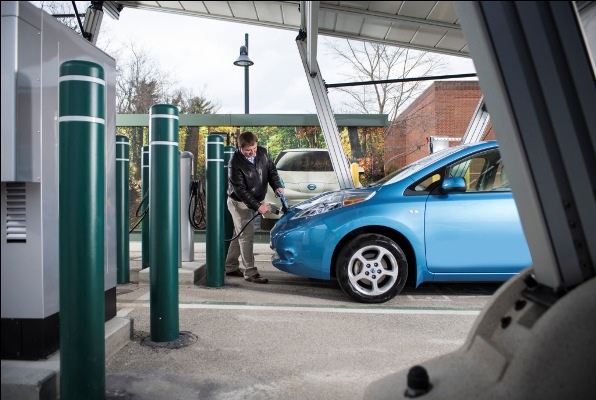The average cost of a lithium-ion (Li-ion) battery cell — sed to power electric vehicles — will drop below $100 per kilowatt hour (kWh) in the next three years, according to analysis by IHS Markit.
The average cost of a li-ion cell is expected to decline further through the end of the decade, to as low as $73/kWh in 2030.
The average cost of a lithium-ion (Li-ion) battery has already fallen 82 percent from 2012-2020. Further reductions are a key factor to increasing the competitiveness and wider adoption of the batteries for electric transportation and in grid storage. By 2023, the cost of a battery will have declined 86 percent (by $580/kWh) in a decade, according to the IHS Markit analysis.
“Progress in growing the share of low-carbon generation, such as solar and wind, in the global power mix also brings a particular set of challenges—namely intermittency. Improving cost-effectiveness of energy storage, particularly batteries, will be key to providing needed flexibility to balance this supply of electricity with demand.” – Sam Wilkinson, associate director, clean energy technology, IHS Markit
“Progress in growing the share of low-carbon generation, such as solar and wind, in the global power mix also brings a particular set of challenges—namely intermittency,” said Sam Wilkinson, associate director, clean technology and renewables, IHS Markit.
IHS Markit expects that the biggest contributor to falling battery cell costs throughout the coming decade will be reductions in manufacturing costs through larger factory sizes and improving economies of scale. Reductions in material costs by improving efficiencies and adopting lower cost cathode compositions, and improvements in battery energy density are also expected to play a role.
Among the three major Li-ion battery cells—Nickel Manganese Cobalt (NMC), Nickel Cobalt Aluminum (NCA) and Iron Phosphate (LFP)—LFP has already fallen below the $100/kWh threshold in 2020. All three types are expected to be below the $100 mark by 2024. LFP will remain the lowest cost option throughout the next ten years.
However, NMC and NCA will continue to command a majority share of the automotive and transport sector on account of their higher energy density.
“Cost is the name of the game. Technology advances and competition between the different types of lithium-ion batteries is driving prices down. Ultimately, the two major growth markets—transportation and electric grid storage—depend upon lower costs to make batteries more competitive with the internal combustion engine and fossil fuel power generation.” – Youmin Rong, senior analyst, clean energy technology, IHS Markit

